A friend recently asked me for help with choosing a pattern to knit her first sweater. I started to text her back with a series of texts, before realizing that this could make for an excellent blog post. So, if you, too, are getting closer to that sweater-knitting ledge and about ready to take the plunge (it’s a fun one, I promise), here are some of my tips for choosing that first sweater knitting pattern.
There are a lot of tips and really the most important one is pick a pattern that you love the look of and know you will knit. Because the first step in wearing your hand knit sweater is to knit the sweater. But I’m all about fearless knitting and I know some people are more comfortable having a bit of a check list to go by, so I’m listing all of these tips. (But really, if you see a pattern you love and want, knit that sweater.)
1. Knit a pattern you will wear.
The first thing I told my friend was to pull out whatever sweaters she owns, and pick her five favorite. We’re looking for common elements—do you tend to favor cables or lace in your sweaters? Are they seamless or seamed (granted, if they’re store bought, they’re likely to be seamed but you never know)? Do you like V-necks or scoop necks? Are you secretly more of a cardigan wearer? (I always love the look of cardigans but find I don’t really wear them much.) Do you really like elbow-length sleeves or longer? Do I prefer a looser fit with more ease or a more fitted style of sweater? Consider your location as well, and whether you’re a person who’s frequently cold or warm—yarn choice is really important for that, and we’ll dive into that in another post.
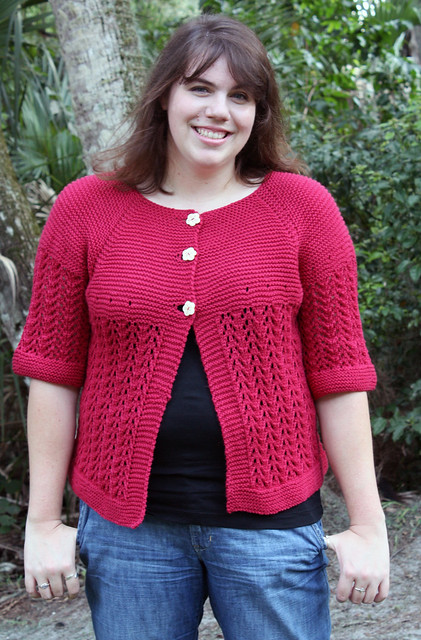
If I could go back in time to 2009-Amy, I’d point out that I don’t really wear cardigans—especially cardigans that don’t close all the way. (My Larch is the glaringly obvious exception to this rule, but the fronts of Larch are designd in a way that they do mostly close even when just hanging loose—plus it’s nice and long, which I know I do like.) It’s just not my personal style, and I have worn that cardigan maaaaabye five times total. I can’t remember. I also made the buttonholes too large, so this cardigan is actually living in the “rip this out” pile. Having knit a good number of garments for myself, I know that I love color and texture.
2. Know what adjustments you might have to make.
If you are a sweater knitter, you know that sometimes we have to move things around a bit in a sweater pattern. They’re written to form an average body, based on average measurements. You are not average. You are you and you may be able to knit a sweater exactly as written and that makes you especially unique, but many, many of us benefit from making small adjustments.
Small adjustments, to my mind, include: lengthening the arms, moving the waist shaping up or down, or adding length to a torso. There are some more complicated adjustments but I wouldn’t suggest trying to make those just yet—not until you have the basics of sweater construction under your belt.
To figure out what adjustments you might have to make, I suggested taking a page out of Amy Herzog’s Knit to Flatter book (check your library availability) and taking a picture of yourself wearing close-fitting tank or camisole while standing in a relaxed, natural position, and objectively identifying the way your body is formed.
The objective part sucks, I know, but in the end this will help immensely.
Is your torso long or short compared to your legs? Where does your “fashion waist” hit compared to your natural waist? (“Fashion waist” here meaning the part of your torso with the smallest circumference, as opposed to your natural waist, which is where your body folds if you bend over to the side.) Amy’s book is invaluable in that it helps identify your body type (top-heavy, bottom-heavy, curvy) and suggests things to look for in knitwear patterns, though I tend to throw out those rules and knit what appeals to me.
See? I did it, and you can too. And you don’t have to post yours on the internet. But you’ll see that the smallest circumference of my torso hits well above my natural waist—and therefore higher than most patterns are designed for. Many (not all, but many) patterns I’ve knit say something like “work until piece measures 2″ from cast-on, then begin waist shaping.” I always work until the piece is at least 4″ from cast-on—and truthfully, it’s usually closer to 6″ because I also add length to a lot of sweaters to cover my belly and have the sweater hit where I want. I also pointed out that I’m proportional, according to my shoulder and hip width, if you’re following along with Amy’s book.
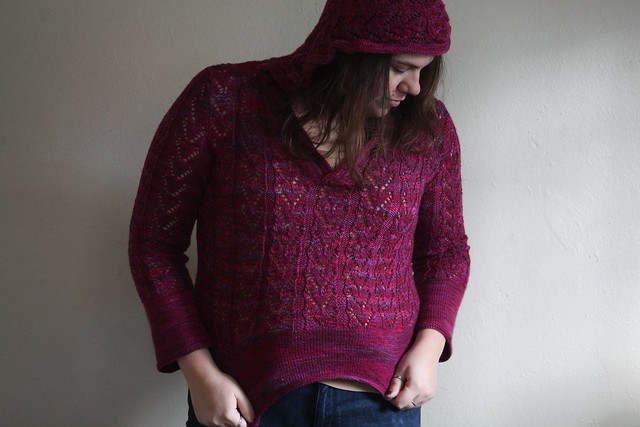
I adjusted the body of my Chambourcin to better fit my bust… but I didn’t add any length. I love this sweater but it doesn’t see a lot of rotation in my wearing because I feel like I’m constantly tugging it down. And I think I screwed up the hood because it just never sits right.
3. Find a few patterns that appeal to you.
Now that you know what you like to wear and what small adjustments you might like to wear, it’s time for the fun and occasionally overwhelming part—finding a pattern to knit.
Ravelry’s advanced search feature is hands-down the best resource a knitter could ask for. I have a ton of patterns in my library (and my favorites, and my queue… shhh) but I’m going to pretend that I don’t for demonstration purposes.
In a perfect world where I only buy yarn once I have a particular pattern in mind, I’m going to ignore the yardage and meterage tabs—because in this world I can just go buy whatever yarn I need. I am going to choose a worsted weight yarn—I recommend this weight for first-time sweater knitters because the knitting will go fast enough that you’ll feel a strong sense of accomplishment any time you’re able to sit and knit. To help with narrowing down results, I always choose “has a picture” and “knitting.”
I want to knit a sweater, so I’m going to go to “Category,” then select “Sweater,” and “Pullover.” Because I’m knitting this for myself, I’m also going to go to the Gender/Age/Size/Fit tab and choose “Adult” from the Age or Size option.
And I still have a whole lot of patterns. Here you have a couple of options. If I wanted to look for a pattern I already owned, I’ll chose the “In My Library” option from the “Availability” tab. But if my library is not returning many results or none of them are speaking to me right now (or I don’t care about having to obtain the pattern), I’ll leave that option blank and instead turn my attention to the “Attributes” tag.
From step 1, I know that I like cables. So I’ll go to “Attributes,” then “Fabric Characteristics” and select “Cables.” And I still have 19 pages of patterns to sift through, so maybe now I’ll look at necklines. I tend to prefer scoop neck sweaters, so I’ll go to “Attributes,” then “Design Elements,” then “Neck,” then “Scoop neck.”
We’ve taken thousands of options down to just fifty-eight and can start to look for patterns we can knit without having to make a ton of adjustments.
4. Choose a pattern that will require minimal adjustments to fit you.
I know from experience that I need to move waist shaping up a bit, but unless I already own the pattern, I can’t look at the schematic to determine it’s waist-shaping placement relative to the bottom hem. I also prefer to lengthen the torso just a bit for most sweaters, to help cover my belly—but again, I usually can’t see the schematic. So now I have to assess the photos from the pattern pages.
If this were my first sweater, I’d probably choose something with minimal waist shaping and just focus on adding the length I need to be comfortable. So a pattern such as Jules or or Affection are appealing to me, because they have minimal, if any, waist shaping.
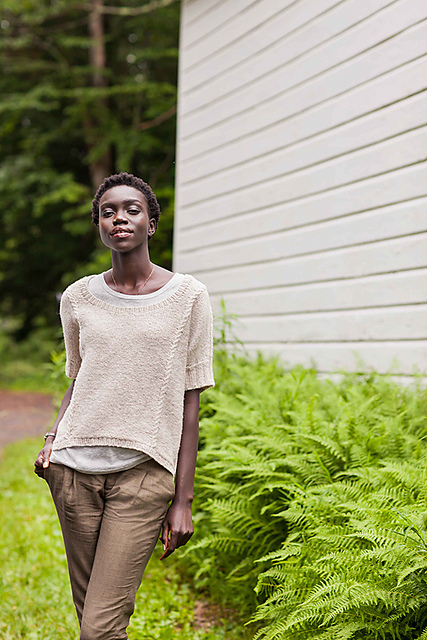

Jules has zero waist shaping and minimal cables, though I’m not sure how that would hang on a lady with a belly. I can tell I’d have to lengthen Affection a bit—either work the ribbing a bit deeper or work an extra repeat of the pattern.
I like the look of Vireo, but I can’t tell if there’s waist-shaping, and the pattern notes mention it’s seamed. Personally, I don’t mind seaming and am generally pro-seaming for sweaters, but not everyone’s as keen on it—you’ll have to make that determination yourself. Bittersweet would be really flattering and fun to knit, but I don’t know how I feel about the repetition of the cable pattern on the sleeves, so that’s another thing to consider.
Patterns such as Lorenzia, Adiri, and Julissa are stunning, but that’s a lot of cable work, plus some waist shaping—for my first sweater, I’d prefer something a little simpler in concentration level.
Now, with my teacher cap on, I would probably recommend Affection over Jules. Affection is raglan-sleeved, so you’d get to practice “traditional” sweater techniques, and as I said, not sure how it would hang on a more substantial body, but on the other hand, I’m not in love with the mini-bobble-like things inside the main cables on Affection. So here I might look at the finished projects pages for these patterns and try to find someone who has finished a sweater and has a similar body type to mine. It’s not always easy, but it does help.
5. Be forgiving.
Knitting a sweater for anyone is an undertaking of love. Especially when knitting one for ourselves. It’s work, and it can be frustrating, and we have to be able to forgive ourselves when we make mistakes. Maybe we mis-cross a cable and don’t realize it until the whole thing is seamed. Sigh about it, and leave it—no one will notice and if somehow, someone does notice and has the gall to say something, just say “Yeah, I meant to do that.” I can’t tell you the number of times I’ve made small goofs in my knitting that I just let go because whatever—I knit myself a sweater. There’s a lot of knitters but in the grand scheme of things, we’re a small percentage and there aren’t that many people who are willing and able to spend the time to make things for themselves.
The only way we get better at knitting is to keep knitting. Did I ever think when I started knitting that I’d become a crazy sweater knitter? Absolutely not. I didn’t live in a climate that was conducive to wearing sweaters, and I didn’t think I’d have the attention span. I knit a looooot of socks to start with, and I don’t still don’t really have the attention span and tend to choose patterns I know I can knit while watching TV. (And “patterns I can knit while watching TV” has changed since I started knitting, too, because I just kept doing it and got better at it).
Even if, at the end of the day, you knit a sweater and decide sweater knitting is not for you, or you fall in love with sweaters and one day realize your first attempt was not the best choice, that’s okay. You did a thing! A marvelous thing!
(And you can always rip it out and reuse the yarn for another sweater.)
After tips or steps one through five, you’ll need to choose your yarn and your size, but this has gotten crazy long so I’ll continue in another post.
I invite all veteran sweater knitters to share their first sweater stories: what inspired you to make that leap? Or were you one of the crazies who knit a sweater as your very first project (I do know those people exist)? Do you still wear your first sweaters? Let’s hear it in the comments, or write your on post and link me!
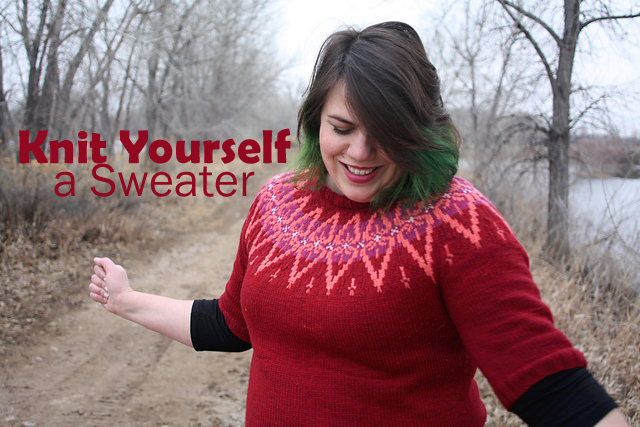
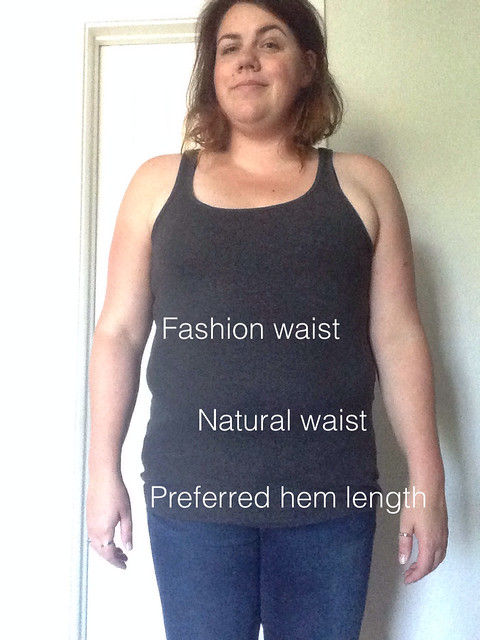
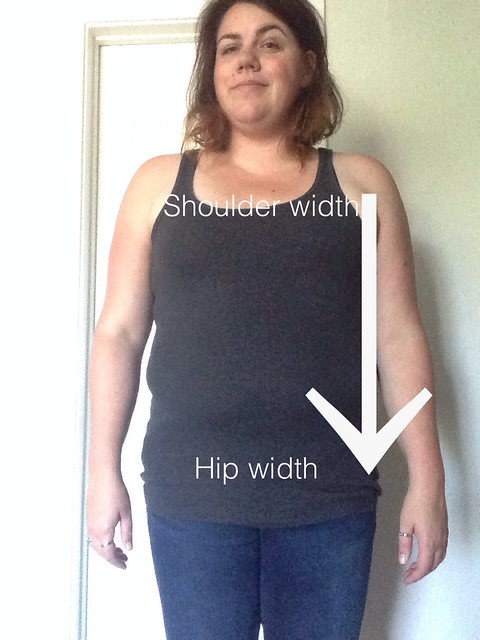
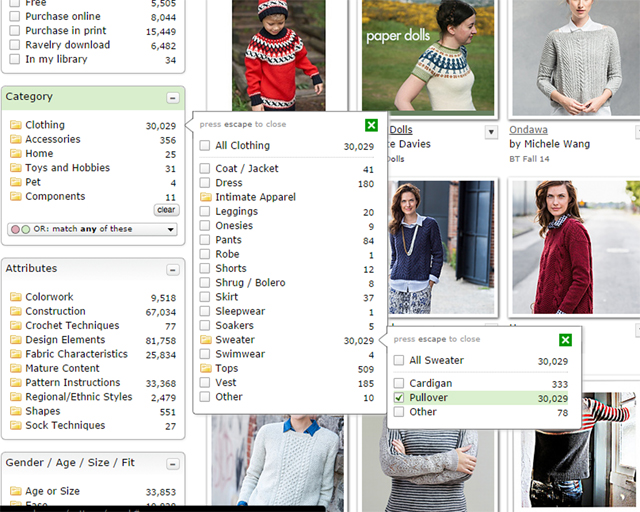
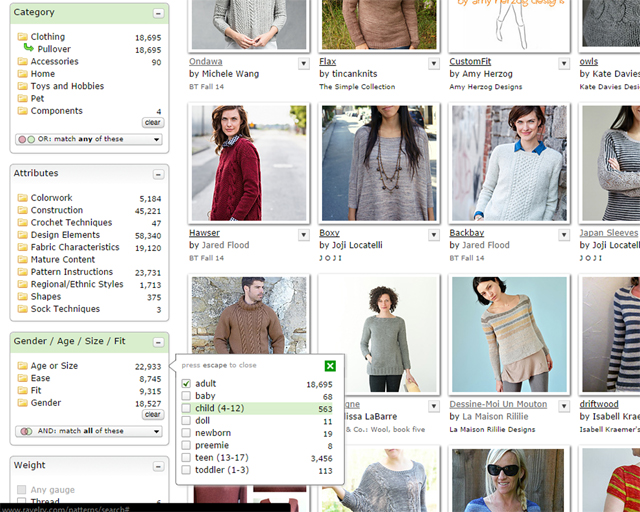
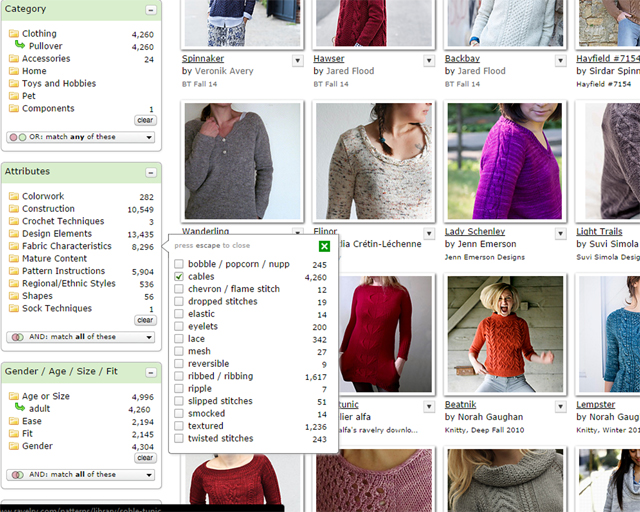
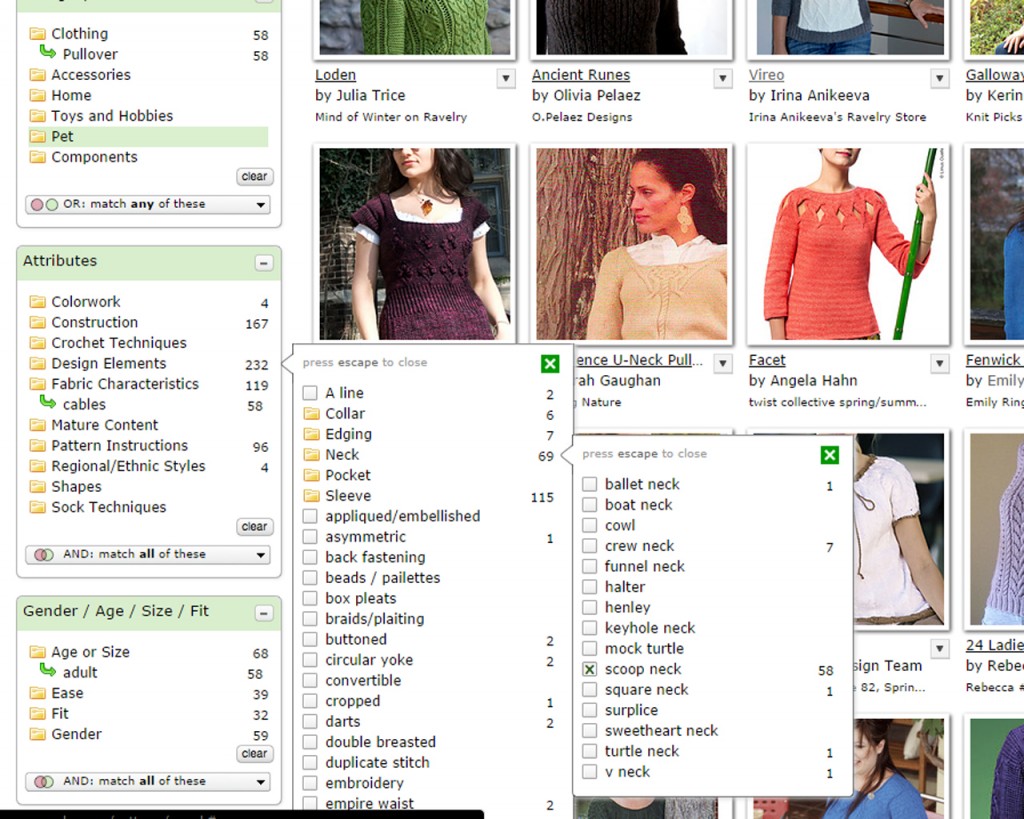

This is absolutely an excellent post. So much great advice here! My biggest piece of advice (technical stuff aside) is in line with what you were saying in step 1. Not only is it important to choose something you’ll wear but, if you’re intimidated, it should be something you really want to make. It takes a lot of the second guessing and fear out of it if it’s a pattern you can’t stop thinking about. Then it’s just a lot of fun! I have so many early sweaters that are total duds but I remember feeling really passionate about making them even though I didn’t have the skill.
What a great, well-reasoned article! “Something you’ll actually wear” and “something you want to make bad enough to endure (and figure out!) the tricky parts” are probably the two biggest bits of advice I would have for a first-timer. My own first sweater was actually inspired by yarn I felt I simply had to wear, and in larger quantities than a scarf. Since I’d really only knit scarves and blankets before then, I didn’t fully believe in gauge swatches and it wound up being practically unwearable!
[…] be a little crazy to combine these two subjects, but they kind of go together. After you’ve chosen your pattern, you’re going to need to choose a yarn (in this scenario, you’re not a person who […]
I love this blog. So much of it is stuff I’ve just finally started to learn after 7 years knitting. I’ve bought so many patterns I will never knit, because I liked the way they looked on the model (not my own body), or because I didn’t realize how hot they would be for FL, or because I didn’t realize the knitting would take 8 years or $500 worth of yarn… I still haven’t found the perfect sweater for me; but I’m getting closer! ^_^ The notes about fashion waist vs. natural waist were so helpful for me!! I never realized knitwear was designed with fashion waist in mind. We’re shape a bit alike, and I too like my sweaters longer, so I will remember your tip about adjusting the length before starting waist shaping! A lot of this nervousness/ignorance is what keeps me from attempting sweaters! xoxo
This is great article! I wish I had read it when I first started sweater knitting, probably would have avoided lots of frustration. I decided my first sweater would be made from mohair and you can imagine how well that turned out. 🙂
This is wonderful! I’m in the process of sort of knitting myself a sweater…it’s a short sleeved top, but your process above is so helpful. Makes me feel a bit more confident about casting on this awesome yoked pullover 🙂
[…] (whose blog you should go read). I receive lots of wonderful advice on her page and also read this post before beginning the sweater. I was curious if I would run the risk of anything shrinking with 100% […]